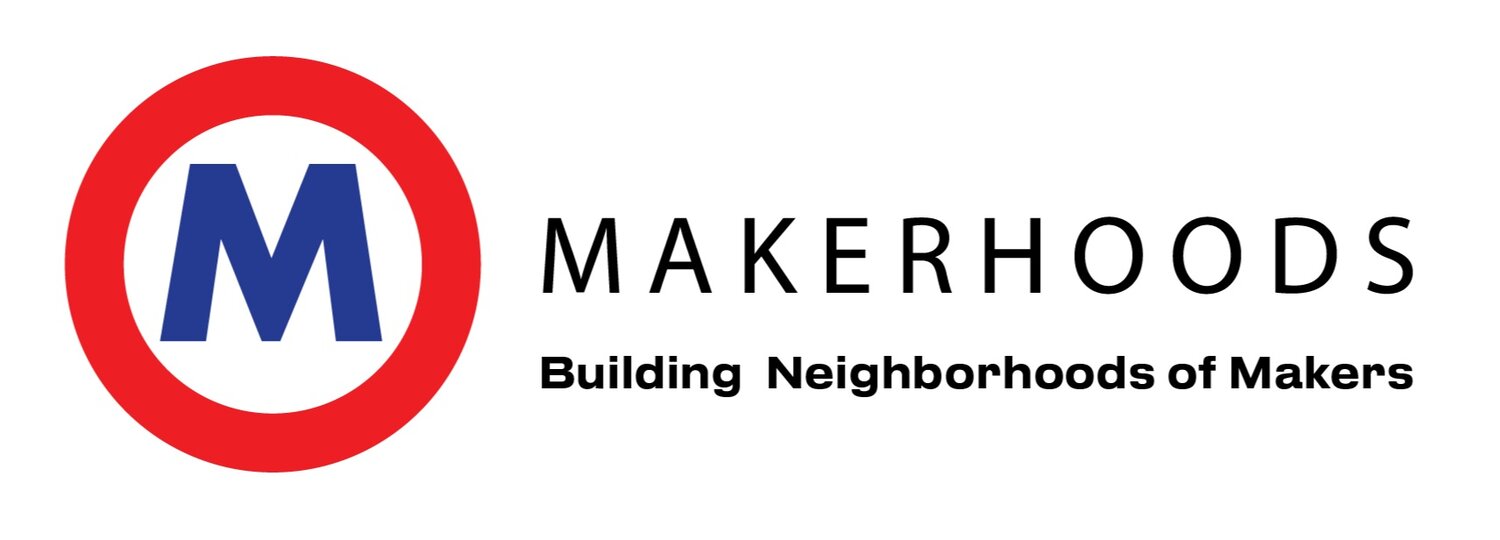Unleashing the power of microenterprise.
Mission
Makerhoods is an innovative approach to urban and economic development. It is a powerful catalyst for micro-entrepreneurs with limited resources, access to capital and networks. Makerhoods combines affordable living, shared spaces for light manufacturing, and business support to help people start and grow profitable businesses that create prosperity, secure their futures and create inter-generational wealth.
Inspiration
Today, 45 million Americans and 1 and 5 children are living in poverty. Employment and income have stagnated for decades. Industrial boom towns of yesteryear are a shadow of what they once were, and the current economic centers have left-out long-term residents from benefiting in the new economic activity. The empty factories and main street blight are indicators we’re living in post-industrial misery. Cities around the country need new economic development strategies that increase employment opportunities, create affordable housing, and facilitate wealth accumulation.
2015 TedxJerseyCity
The Makerhoods Model
For many Americans, self-employment has become the only viable path to self-sufficiency. Today, microbusinesses (businesses with 5 or fewer employees) are found in every industry and represent 92% of all U.S. businesses.
“The median net worth of business owners is almost 2.5 times higher than non-business owners.”
Microbusinesses have a tremendous economic impact on the U.S. economy. They are responsible for 26 million jobs and contribute $135.5 billion in taxes and fees to federal, state, and local governments.
Not only do microbusinesses play an important role in the U.S. economy, but they also significantly impact the owner. From the Association for Enterprise Opportunity “The Power of One in Three” report, “the median net worth of business owners is almost 2.5 times higher than non-business owners. For a black woman, the difference is more than 10x. For a Latino man, the difference is 5x.”
However, starting and running a profitable small business is incredibly challenging – rising costs, finding new customers, cash flow issues, legal requirements, and of course household bills and responsibilities.
The Makerhoods model addresses these issues in a holistic way by providing housing, commercial space, and business development services in a supportive community all at one monthly cost.
Housing
The need for affordable housing continues to increase. By including mixed-income housing into the Makerhoods model:
The daily commute is eliminated.
Child care logistics are simplified.
Business owners and residents develop a sense of ownership and participation in the community.
Business owners have access to new and expanded social networks.
Commercial Space
High housing costs is a well-known and advocated issue. However, less discussed and less advocated is the fact that commercial space for small-scale entrepreneurs is even more costly and less attainable. According to the Institute for Local Self-Reliance 2016 Independent Business Survey, “59 percent of independent retailers reported being worried about the escalating cost of rent, with one in four describing it as a top challenge.” Retailers aren’t the only businesses fearful of rising rent costs. In 2017, the Urban Manufacturing Alliance surveyed 5 U.S. cities on the challenges light manufacturers face. In all cities, affordable space to manufacture their goods was in the top 5 challenges.
By leveraging the revenue from the market-rate apartment, the commercial space rent is significantly subsidized. In Newark, for example, the Makerhoods commercial spaces are over 5 times less expensive.
Business Development Services
“$1 dollar of program costs to assist microbusinesses generates between $8.96 and $9.45 in increased owner’s draw and wages”
Affordable space is not enough. FIELD at the Aspen Institute, the leading research organization in microenterprise development, found that $1 dollar of program costs to assist microbusinesses generates between $8.96 and $9.45 in increased owner’s draw and wages.
Furthermore:
Microbusinesses that receive support services have a 30% difference in average annual revenue growth compared to businesses that did not receive support.
32% of existing businesses working with an MDO increased their owners’ draw for an average of $7,017 per business.
94% of businesses receiving support from an MDO were still in a business a year after working together.
By reducing key barriers such as housing and commercial occupancy costs and combining it with comprehensive business development services, our goal is to reduce the break-even point of microbusinesses, facilitate faster revenue growth, and ultimately increase household financial stability for microentrepreneurs.
Sources:
“Bigger than You Think: The Economic Impact of Microbusinesses”, Association for Enterprise Opportunity 2014
“The Power of One in Three: Creating Opportunities for All Americans to Bounce Back”, AEO 2011
“Reimagining Technical Assistance: Shifting the Support Landscape for Main Street”, AEO 2016
“Affordable Space: How Rising Commercial Rents Are Threatening Independent Businesses, and What Cities Are Doing About It,” Institute for Self-Reliance 2016
“EntrepreneurTracker client outcomes survey highlights – 2014”, MicroTracker, 2016

